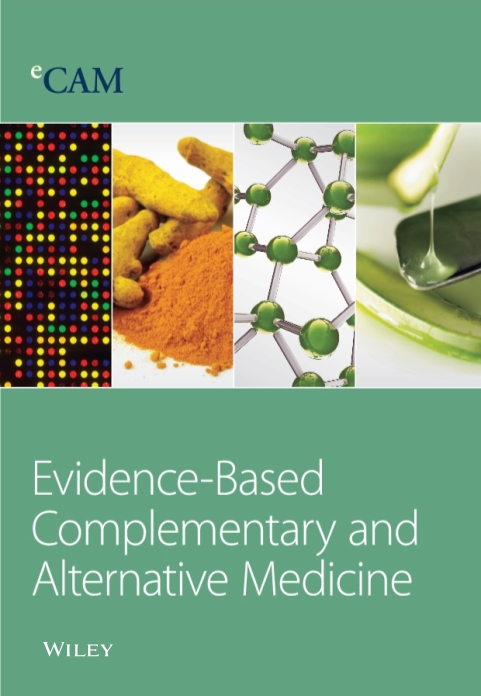牛尿馏分(CUD)抗菌活性的硅学和体外研究
4区 医学
Q2 Medicine
Evidence-based Complementary and Alternative Medicine
Pub Date : 2024-01-08
DOI:10.1155/2024/1904763
引用次数: 0
摘要
牛尿蒸馏物(CUD)是一种传统的印度药物,用于治疗各种疾病,包括细菌感染。然而,支持其作为药物使用的证据有限,对其安全性和有效性的研究也不够深入。在这项研究中,我们采用体外和硅学方法评估了 CUD 对五种细菌菌株的抗菌活性。体外实验表明,CUD 对所有测试菌株都具有显著的抗菌活性,抑菌区(ZOI)范围为 13 至 24 毫米,最低抑菌浓度(MIC)值范围为 12.5 至 50 微克/毫升。结果表明,15% 浓度的 CUD 对金黄色葡萄球菌和伤寒沙门氏菌的抗菌活性最高。为了进一步研究 CUD 的抗菌机制,我们对 CUD 的活性化合物与参与蛋白质合成的细菌蛋白质进行了硅对接研究。结果表明,2-羟基肉桂酸(ΔG = -6.9 kcal/mol)和阿魏酸(ΔG = -6.8 kcal/mol)与目标蛋白质(DNA 回旋酶,PDBID:4KFG)的对接得分最高。与 Val71 和 Asp73 氨基酸之间的氢键相互作用对它们的抗菌活性至关重要。本文章由计算机程序翻译,如有差异,请以英文原文为准。
In Silico and In Vitro Studies of Antibacterial Activity of Cow Urine Distillate (CUD)
Cow urine distillate (CUD) is a traditional Indian medicine used to treat various diseases, including bacterial infections. However, there is limited evidence to support its use as a medicine, and its safety and efficacy have not been thoroughly studied. In this study, we evaluated the antibacterial activity of CUD against five bacterial strains using in vitro and in silico approaches. In vitro experiments showed that CUD has significant antibacterial activity against all tested strains with a zone of inhibition (ZOI) ranging from 13 to 24 mm and minimum inhibitory concentration (MIC) values ranging from 12.5 to 50 µg/ml. The results indicated that the 15% concentration of CUD displayed the highest antibacterial activity against Staphylococcus aureus and Salmonella typhi. To further investigate the antibacterial mechanism of CUD, we performed in silico docking studies of the active compounds of CUD with bacterial proteins involved in protein synthesis. Our results showed that 2-hydroxycinnamic acid (ΔG = −6.9 kcal/mol) and ferulic acid (ΔG = −6.8 kcal/mol) exhibited the best docking scores with the targeted proteins (DNA gyrase, PDBID: 4KFG). The hydrogen bonding interaction with amino acids Val71 and Asp73 was found to be crucial for their antibacterial activity.
求助全文
通过发布文献求助,成功后即可免费获取论文全文。
去求助
来源期刊
自引率
0.00%
发文量
1983
审稿时长
2.2 months
期刊介绍:
Evidence-Based Complementary and Alternative Medicine (eCAM) is an international, peer-reviewed journal that seeks to understand the sources and to encourage rigorous research in this new, yet ancient world of complementary and alternative medicine.
The journal seeks to apply scientific rigor to the study of complementary and alternative medicine (CAM) modalities, particularly traditional Asian healing systems. eCAM emphasizes health outcome, while documenting biological mechanisms of action. The journal is devoted to the advancement of science in the field of basic research, clinical studies, methodology or scientific theory in diverse areas of Biomedical Sciences. The journal does not consider articles on homeopathy.

 求助内容:
求助内容: 应助结果提醒方式:
应助结果提醒方式:


